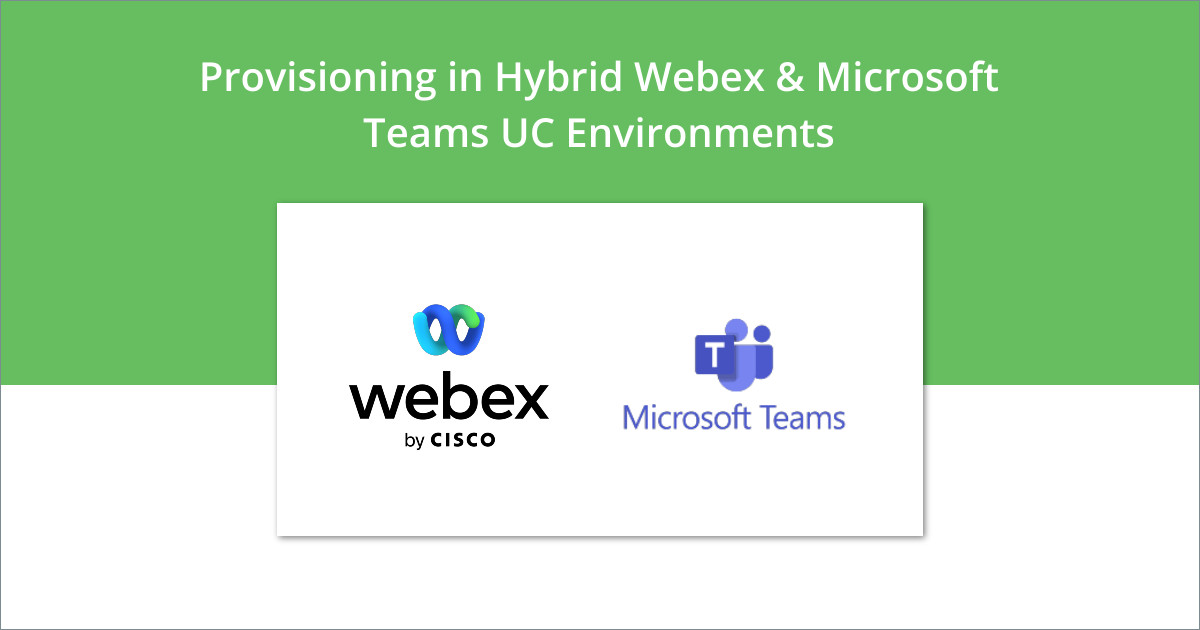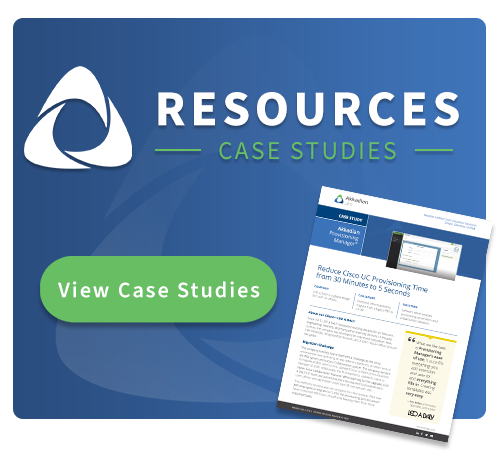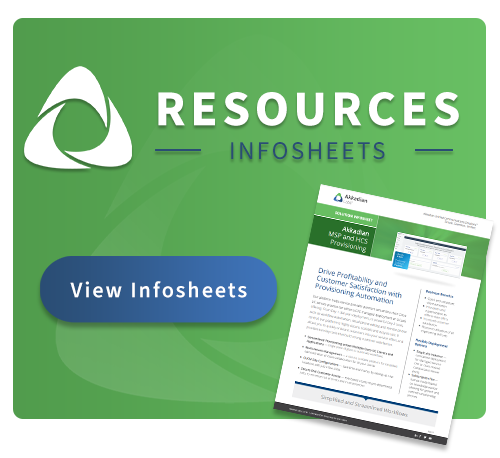How do UC engineers provision new users in environments using more than one UC platform? In this blog we talk about how automated provisioning can help provision users even in environments with more than one UC platform.
In an age of hybrid and remote work, interoperability is critical to unified communications. Disparate systems, third-party applications, and even multiple UC platforms have to be able to work together so shared data can flow effectively between systems allowing employees to work together efficiently.
Nowhere is this more crucial than at large companies, where employees are increasingly having to collaborate across hybrid UC environments. What’s driving it? There are several reasons:
- Mergers and acquisitions where one company uses Teams and the other uses Cisco Collaboration or Webex
- Regular interaction with outside vendors or subsidiary companies that use different UC applications
- Companies with legacy Cisco hardware who moved over to Teams during the pandemic
- A new CIO or head of IT bringing in their preferred system to their new role
- A company interacts regularly with other outside entities
One of the most popular UC hybrid models is Cisco Webex and Microsoft Teams. Let’s dig into what this setup looks like and what provisioning users in these environments entails.
Benefits of Webex & Microsoft Teams Hybrid UC
The good news for enterprises running both Webex and Teams is that Cisco and Microsoft can get along almost seamlessly. Both organizations have made it priority for their applications to work together, and they continue to make updates and product enhancements with the hybrid UC environment in mind.
There are immediate benefits for companies that adopt this arrangement. Cross-platform messaging. The ability to host Teams meetings on Cisco devices and vice versa.
The bottom line is that the Webex/Teams hybrid UC model is both highly flexible and collaborative, making it easy for companies to streamline existing workflows and start recouping their communications investments.
The Bad News: Manual User Provisioning is Still a Challenge
While these platforms work seamlessly, one area that often gets overlooked is user provisioning.
Most UC solutions have basic provisioning tools that lack essential features, making custom provisioning jobs and bulk provisioning almost impossible.
This means users must be manually provisioned in both platforms. That’s a problem.
Manual user provisioning is a time-consuming process that requires UC engineers to manually fill out information for each user, in each application. It’s tedious work that is prone to producing errors. Those errors can be costly, leading to security issues or even disruptions or outages of the entire UC environment.
Thankfully, avoiding these challenges is simple.
Solution: Automated UC Provisioning
Automated UC provisioning solves many of the problems that come with manual provisioning. The two biggest are that it eliminates errors and completes hours-long provisioning jobs in seconds.
Automated UC provisioning can help organizations drastically reduce the time and expense they typically invest in provisioning tasks. It also frees up the people who are often responsible for handling provisioning work – experienced engineers – so they can focus on initiatives that have greater business impact, leading to more cost savings down the line.
Custom job templates and role-based access – two of the most popular features in automated UC provisioning – help make the work repeatable and more secure. Taken together, this means with the right automated UC solution in place, a business can offload its UC user provisioning work to HelpDesk personnel.
But beyond the cost-saving benefits, the most important factor is finding an automated solution that works with both Teams and Webex.
Conclusion
Interoperability between UC systems is great for businesses. The fact that these major UC providers also see it that way is a boon to enterprises everywhere, allowing them to avoid costly migrations or clunky implementation.
Provisioning users in Webex/Teams hybrid UC environments doesn’t have to be a headache for UC engineers. And if automated UC provisioning is part of the picture, it doesn’t have to even be a job for UC engineers.
That’s where a solution like Akkadian Provisioning Manager can help. Akkadian works natively with both Teams and Webex, allowing UC engineers to set up custom provisioning jobs that can automatically provision users in both applications at once – saving time and money while keeping collaboration flowing.
Looking for an easy provisioning solution for your Microsoft Teams and Webex users? Get a demo of Akkadian Provisioning Manager to see just how easy it is to provision users even in complex environments.



